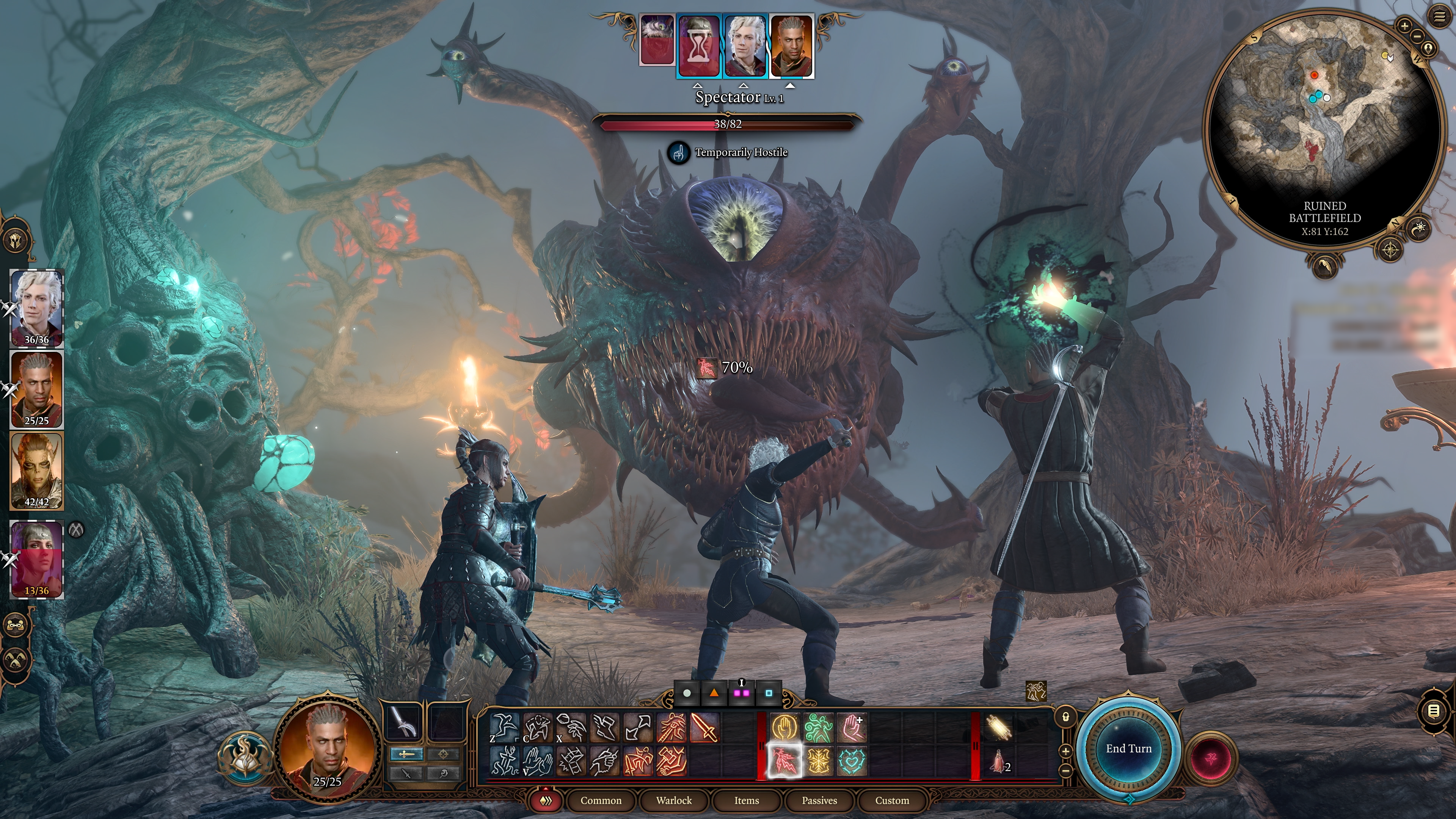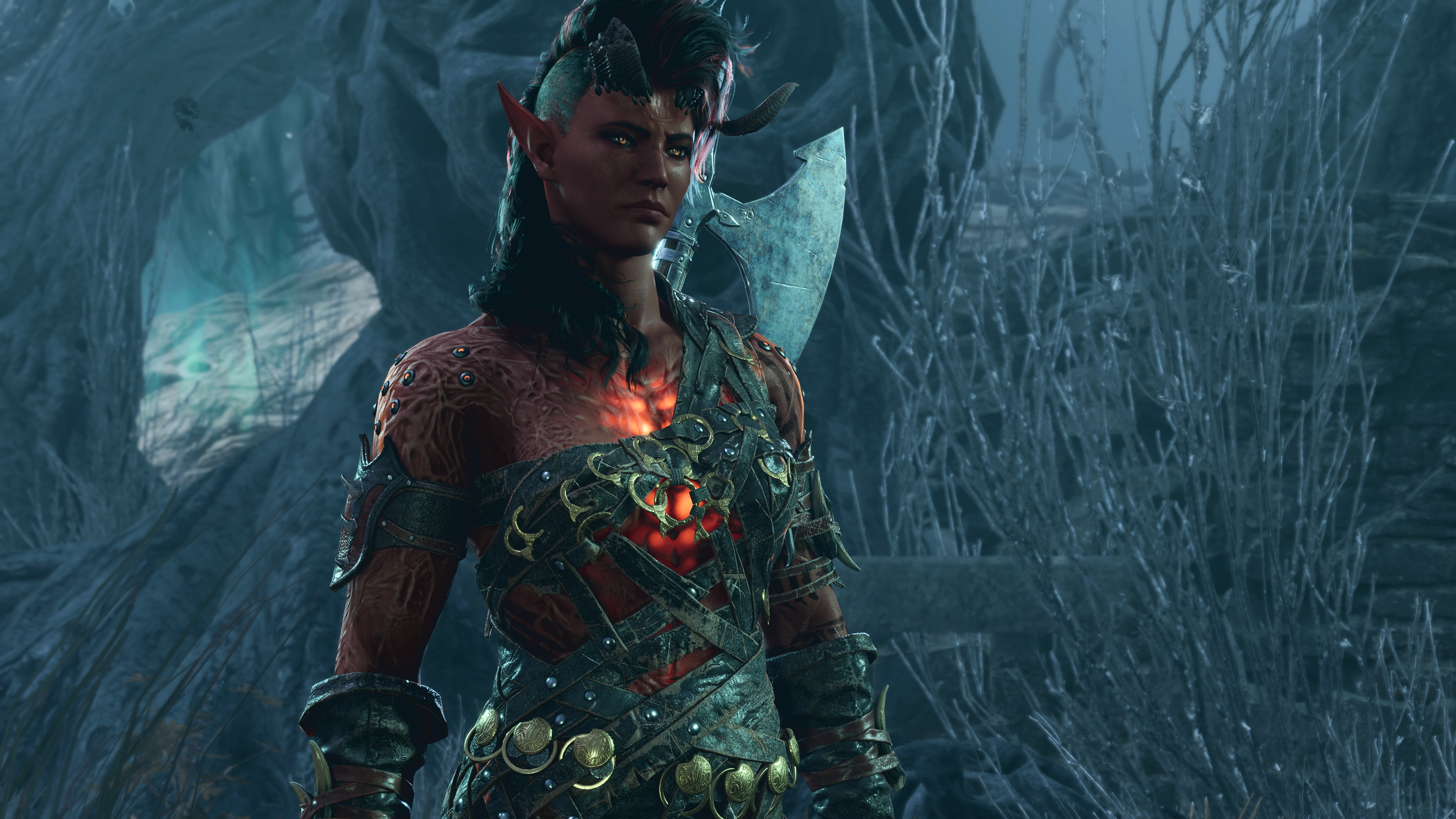
Baldur’s Gate 3 early review: Modern fantasy
First, the basics. Baldur’s Gate 3 is a Dungeons & Dragons game through and through, but you don’t need to be familiar with that world or those systems to enjoy it. It’s a dense roleplaying adventure that alternates between an old-school isometric view and close-up, voice-acted cut scenes, offering players a world of choice through complex, cascading chains of cause and effect.
If some roleplaying video games throw you into the deep end of the swimming pool with their ethical dilemmas, Baldur’s Gate 3 pushes you into the Mariana Trench, hands bound, and tosses a pocket knife in after you. And I mean that in the best way possible.

The game offers a fascinating slice of one of D&D’s major settings, the Forgotten Realms, introducing you to gods, monsters and space-faring alien civilizations in a way that’s much more compelling than your average black and white good vs. evil fantasy retelling. No matter what you set out to do, you’ll make Faustian bargains wrapped in Sophie’s choices — and given the complexity and layered world, no two playthroughs are the same. If any of that sounds even remotely compelling, this is a game for you.
Baldur’s Gate 3 follows Baldur’s Gate 2, one of the best-loved RPGs of all-time — and one that was released over two decades ago. Ghent, Belgium-based developer Larian Studios was tapped to craft the sequel, which at the time was incredible news for anyone familiar with Larian’s stellar track record. Personally, I’d only played Larian’s last game, the awkwardly-named Divinity: Original Sin II, but that game’s wildly rich, interactive world was enough for me to immediately download Baldur’s Gate 3 at launch. This game plays very similarly, but benefits from the combined boons of a massive budget, D&D’s rich systems and its lore.
I’d never played prior D&D video games, but like a lot of people, I started playing the tabletop game with friends during the pandemic. I’m probably more into the crunch — the technical side: subclasses, modifiers, et cetera — than the average person and watching everything you’d write on a character sheet come to life in three voice-acted dimensions is very cool. Anyone well-versed in D&D’s spells and classes will certainly find an easier learning curve, but from my 20-ish hours in the game so far, anyone who likes to sink into a tactically-minded game or just loves roleplaying will find a ton to enjoy here.
Larian loves the gray areas and Baldur’s Gate 3 is all about player choice. Unlike a normal on-rails RPG, the game sets you loose from its earliest moments. Everything is interactive and problem solving in the game feels like the best moments in tabletop D&D.
Want to get behind a guarded locked door and into an ornate chest? Cast an illusion spell to create a diversion, have your rogue pick the lock and sneak back out. Or, have your warlock — a famous monster slayer named Wyll with some dark secrets — teleport into the room and back out again while you chat up the guard. Alternatively you could kill the guards, break the door down, or use a Knock spell to open it with magic — and those are just easy options off the top of my head.
Most of the game’s encounters are wide open to whatever players can dream up, something Baldur’s Gate 3 shares in common with the other obvious game of the year frontrunner, The Legend of Zelda: Tears of the Kingdom. Both games set a new high bar for how interactive a game world can be, encouraging imaginative solutions in a way that the modern crop of Ubisoft-style open world games chock full of menial errands and shallow quests never could.
Part of the way through Act 1 of Baldur’s Gate 3 — a bit over 20 hours in — the game is anything but shallow. Like with the game’s interactive systems and inherent logic puzzles, the developers also treat the player like they’re clever enough to handle a bit of complexity. Moral gray areas are on full display within your troubled pack of heroes (or villains, or more likely something in between) and their relationships to communities you’ll encounter in your travels. The dialogue is snappy and often very funny, making roleplaying through the game’s incredible animated social scenes a joy, an experience only deepened by the game’s thoughtfully diverse world of characters.
As with the well-guarded chest scenario above, Baldur’s Gate gives you a breadth of social options. When you catch your conspicuously pale new adventuring companion Astarion trying to bite your neck in the night, you can respond by attacking him, warning him off or sympathetically lending him a little of your own blood, just this once.
The other characters are equally flawed and charming, particularly Karlach, my future wife, a demon-like tiefling jock who escaped the hells and is ready to have a good time. The only character I don’t love so far is our literally power hungry wizard, a choice that feels right because a) he’s the token human white guy and b) I’m a wizard, who needs Gale? (You can romance all of these weirdos too, sex scenes and all.)
The combat and social portions of the game weave into one another well, though if you’ve never played a Larian game, don’t have much D&D knowledge or haven’t spent time with tactical turn-based RPGs the battle portions might prove difficult early on. Knowledge in any of those categories should be more than enough to make for an enjoyable challenge that isn’t too frustrating (yet, from my experience).
Baldur’s Gate 3 does an excellent job of letting you create your own custom character, but you also have the option of playing a companion character with a pre-written plot and a pre-selected class and background. If you opt to make a custom character and play the normal way (or opt for the “dark urge” plot playthrough — a particularly harrowing, horror-esque alternative story option) you’ll be making a character from scratch.
The game was built onto an adapted version of D&D’s current ruleset, offering all of the same class options, many of the race options (elf, half-orc, human, etc.) and even the core set of subclasses. All of that choice means that there are many ways to play, and because you’ll be partied up with three other companions with their own race and class combos, anything you pick should work well. As a D&D player, controlling my whole group is a surprisingly fun way to learn the martial classes that I rarely play as someone who sticks to magic casters like wizards and clerics.
The choices you make early have a huge impact on how you’ll play Baldur’s Gate 3, much like they do in a real D&D game. A barbarian is a strong front-line fighter, but not much of a smooth talker. A bard can heal and cast support spells, talking your party out of trouble as the need arises. A wizard knows a lot about the arcane inner workings of the world, all while collecting scrolls of every spell the game has to offer.

Meet my wife.
Because I like complexity and am currently playing one in my own campaign, I opted to start my playthrough as a wizard. Knowing that Divinity: Original Sin II handsomely rewarded stealth and pickpocketing, I also boosted those skills — not a traditional wizardly archetype. Multiclassing is also more open in the game than a real D&D campaign and you can pay to change your class build on the fly, two great game design choices that mean you’ll be encouraged to experiment. There’s little reason to choose an optimized build over something fun, though I’d recommend boosting charisma for social skills and keeping someone sneaky around to maximize in-game antics.
By taking the Friends cantrip (a low-level spell that can be cast for free), I can give myself advantage when I need to talk my way in or out of somewhere, lie outright, or persuade an NPC to my way of thinking. The game does a wonderful job of simulating a real D&D game when your character faces in-game challenges, allowing you to roll dice and add any relevant perks you have (like Friends, or Guidance — another essential cantrip) to sweeten the roll. The sound design in this portion of the game is perfect and after 20-plus hours I’m still not tired of listening to the virtual dice clatter around, deciding my fate.
For my magic heavy playstyle, the most exciting thing about Baldur’s Gate 3 is that the game offers most of the same spells as D&D, laying out a vast toolkit of custom solutions for the challenges that will crop up across more than 100 hours of content (that’s 100 hours for a single playthrough — this is a very replayable game, by design). Real-life logic often applies in-game and if you can think up a clever way something might work, the game is usually happy to reward you.
Going into the game, I was worried that the map wouldn’t provide enough freedom and exploration but Baldur’s Gate 3 has proven me wrong at every turn. What seems like a straightforward ground-level map in the early hours continues to unfold and unfurl, proving much more complex and interconnected than I could have hoped. Secret areas offer rewards behind locked doors and around sandy inlets, and each of the game’s hidden pockets make exploration worthwhile. There’s no filler here.
It’s remarkable, at least in Act 1, that the map hints at a FromSoftware-like approach to interconnectedness. I won’t give too much away, but after discovering a massive underground area, I realized that a completely missable (though incredible!) optional boss fight I did in a swamp earlier actually concealed a secret portal into that zone, which I only entered hours later from a completely different corner of the map. Baldur’s Gate 3 will never hold your hand — you can outright miss huge areas, characters and side stories — so when you do make a big discovery, it’s so much more meaningful than in a normal game that’s left giant breadcrumbs trailing toward all of its secrets.
Baldur’s Gate 3 is PC-only for now and it’s already shattering records. With more than 800,000 people playing simultaneously over the weekend, it’s already cracked Steam’s all-time top ten chart. The PlayStation 5 launch next month will drum up even more interest and hopefully anyone who’s considered giving this game a try gives it a shot.
So far from my experience, the game plays like a dream on extreme settings, even on my mid-range custom PC (my rig packs a pretty high end CPU but only a 1660 Super for graphics thanks to the 2020 era GPU shortage). I’ve run into plenty of bugs so far but nothing game breaking, and hopefully those will get smoothed out in time. Until then, quick save is your unsung 5th party member.
To be clear, Baldur’s Gate 3 is an incredible achievement in gaming — an unlikely hit that combines old-school computer RPG gameplay with Dungeons & Dragons’ current cultural cachet and beautiful high-end graphics to push the bar higher for an entire industry. Even if Larian doesn’t stick the landing (or the later acts lag like they did in Divinity: Original Sin II), I can’t imagine anything tanking my opinion in the next 60+ hours.
Like some of the other best games of the last few years — Tears of the Kingdom and Elden Ring spring to mind — Baldur’s Gate 3 makes players feel clever, stoking their imaginations and inspiring a great sense of wonder at a massive game world come to life, in this case with Dungeons & Dragons’ dragons, drow and all.
